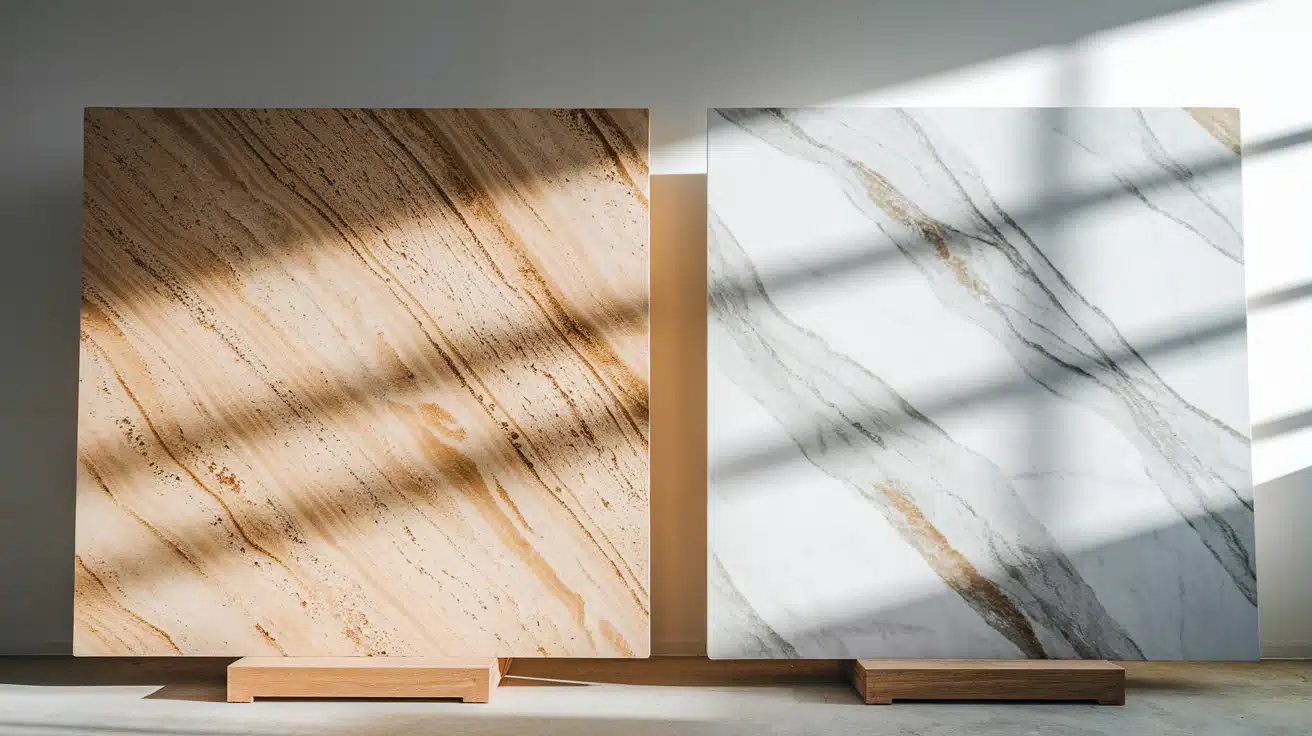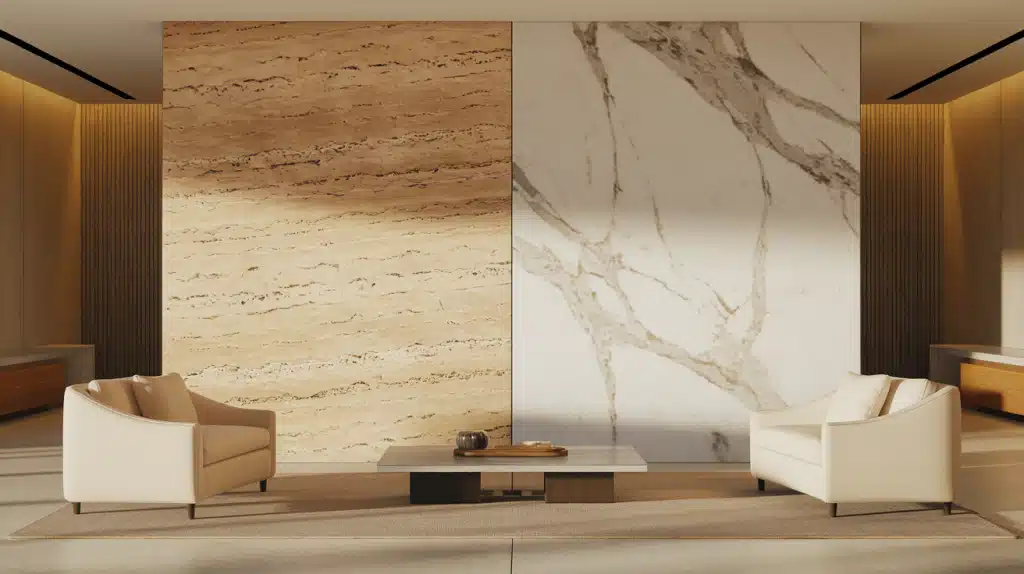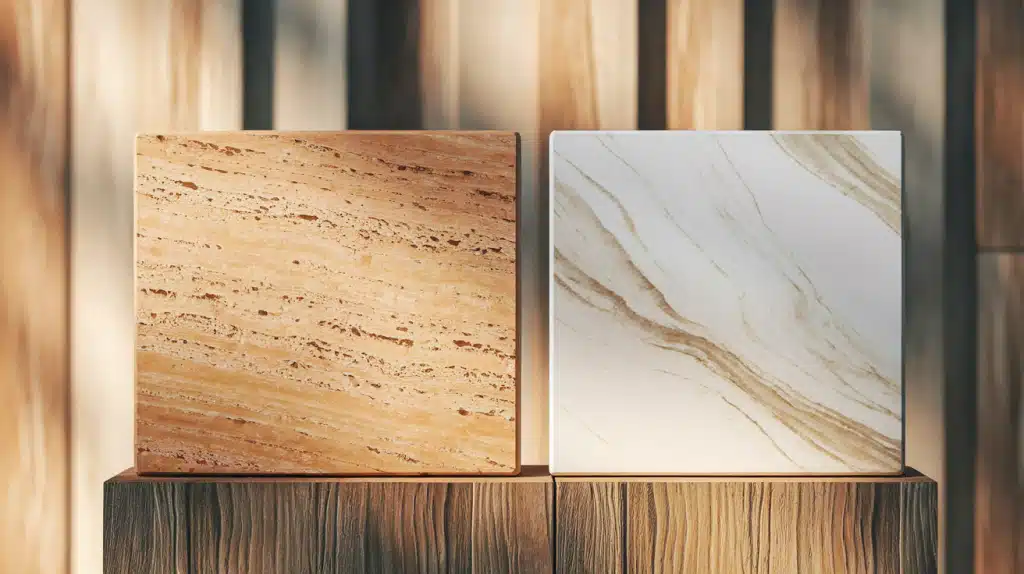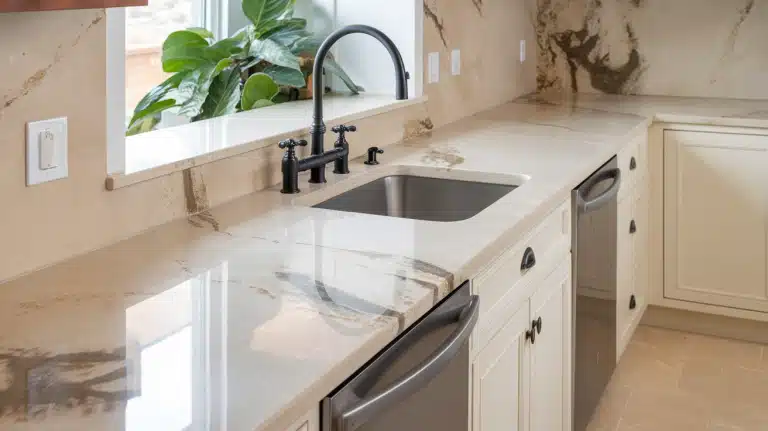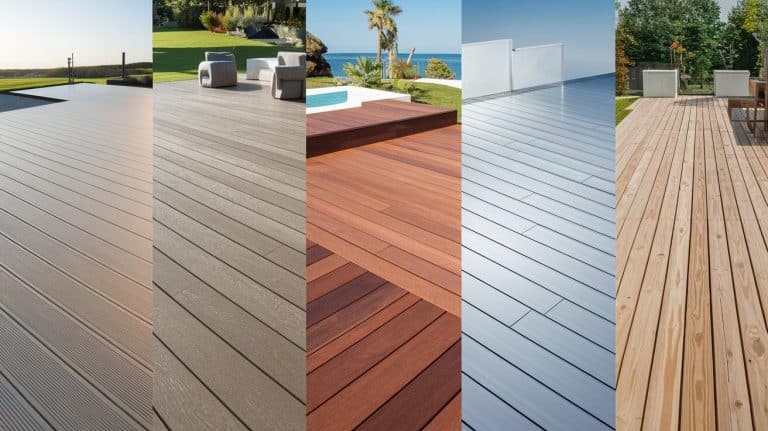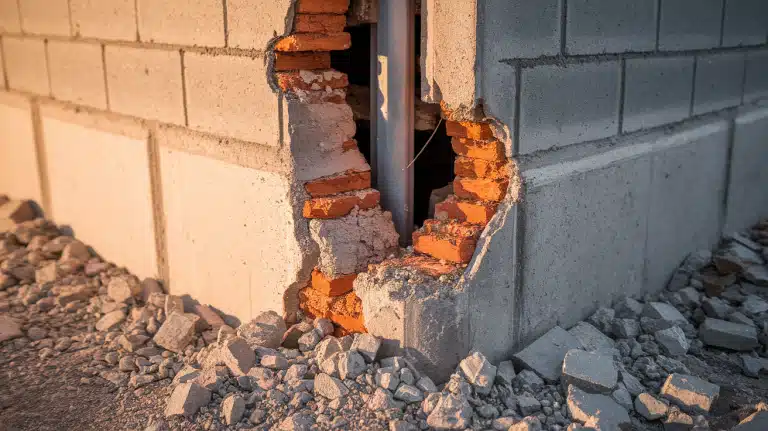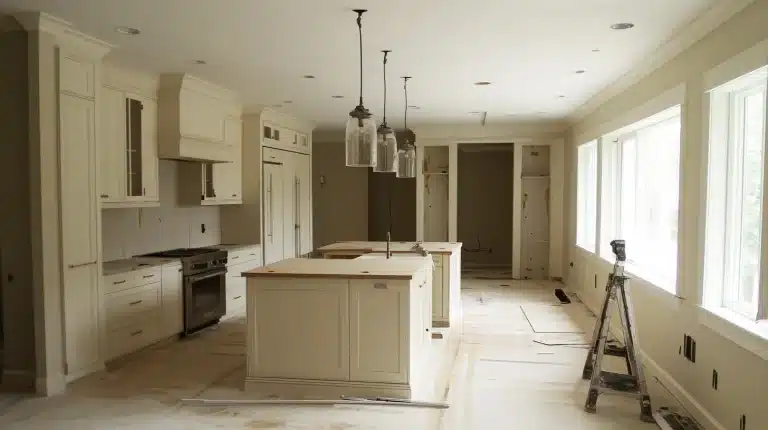Travertine vs Marble: Which Stone Is Right for Your Home?
Choosing between travertine vs marble for your home can feel overwhelming. Both natural stones bring beauty and value to any space, but they work differently in real life.
Travertine offers a warm, earthy look that’s budget-friendly and perfect for outdoor areas. Marble delivers luxury and sophistication, but it comes with higher costs and increased maintenance needs.
The key differences extend beyond appearance, durability, slip resistance, and cleaning requirements, all of which are important for your daily life.
This guide breaks down everything you need to know about marble vs travertine flooring so you can pick the right stone for your lifestyle, budget, and design goals.
Let’s compare these popular options and find your perfect match.
What is Travertine?
Travertine flooring is a natural limestone formed around mineral springs over thousands of years. This stone comes in warm, earthy colors, such as beige, tan, ivory, and gold tones, that bring a natural feel to any space.
You can find travertine in various finishes, including honed for a smooth appearance, tumbled for a rustic texture, or brushed for added grip.
Travertine tile is popular in bathrooms, outdoor patios, garden walkways, and accent walls because it handles moisture well and remains cool underfoot in hot weather.
What is Marble?
Marble countertops are made from a metamorphic stone that forms when limestone is compressed under intense heat and pressure deep underground.
This process creates the signature veining patterns that make each marble slab unique. Marble is available in classic colors such as white, gray, green, and black, featuring flowing veins that add a touch of luxury to any room.
Marble design ideas are ideal for countertops, foyer floors, columns, and grand staircases, where you want to make a statement with timeless beauty and sophistication.
Travertine vs Marble: Quick Comparison
| Feature | Travertine | Marble |
|---|---|---|
| Porosity | Very porous; needs frequent sealing | Less porous, still prone to etching |
| Scratch Resistance | Softer; scratches easily | Harder, still sensitive to acids |
| Shine | Matte to low sheen | High polish and gloss are possible |
| Heat Handling | Stays cool; great for outdoors | Heat-resistant, but best indoors |
| Installation | Easier to cut and install | Heavier; requires expert installation |
Travertine vs Marble: 7 Key Differences at a Glance
Here’s a quick breakdown of the most critical differences between travertine and marble, covering everything from durability and style to cost and maintenance, to help you decide which stone best suits your space.
1. Appearance
Travertine: Shows an earthy, natural texture with a matte finish that feels organic. The surface has tiny holes and pits that give it character. Natural color variations create a lived-in, comfortable appearance that suits casual settings well.
Marble: Features smooth, polished surfaces with dramatic veining patterns throughout. Each slab displays unique lines and swirls that catch light beautifully. The glossy finish reflects light, creating a sophisticated and formal appearance.
2. Durability
Travertine: Has a softer composition that makes it more porous than other stones. Water and stains can soak in easily if not properly sealed. The material can chip or wear down in high-traffic areas over time.
Marble: Offers a denser stone structure that resists wear better than travertine. However, acidic substances like lemon juice or vinegar can cause permanent etching. Scratches may appear on polished surfaces from daily use.
3. Maintenance
Travertine: Needs sealing every 1-2 years to prevent stains and water damage. Daily cleaning requires pH-neutral cleaners to avoid surface damage. Regular filling of holes and re-sealing keeps the stone looking fresh.
Marble: Requires professional polishing every few years to maintain its shine. Immediate cleanup of spills prevents permanent staining and etching. Specialized marble cleaners protect the surface from acid damage.
4. Slip Resistance
Travertine: Provides better grip when wet due to its naturally textured surface. The rough finish makes it safer around pools and wet areas. Tumbled finishes offer the most slip resistance for outdoor use.
Marble: Can become very slippery when wet, especially with polished finishes. Honed marble provides better traction but still requires caution in bathrooms. Anti-slip treatments may be needed for safety in wet zones.
5. Cost
Travertine: Generally costs less than marble for both materials and installation. Budget-friendly options start around $3-5 per square foot for basic tiles. Lower maintenance costs make it affordable long-term for most homeowners.
Marble: Commands premium prices due to its luxury status and limited supply. High-quality marble can cost $10-20+ per square foot installed. Ongoing maintenance and restoration add to the total lifetime investment.
6. Best Use Cases
Travertine: Perfect for outdoor patios, pool decks, and casual bathroom floors. Works well in rustic or Mediterranean-style interiors with warm color schemes. Handles temperature changes better than marble in outdoor settings.
Marble: Ideal for formal foyers, kitchen countertops, and upscale bathroom vanities. Suits modern, traditional, or luxury interior designs perfectly. Best used indoors where temperature and moisture can be controlled.
7. Aesthetic Style
Travertine: Creates a warm, organic atmosphere that feels relaxed and welcoming. Natural earth tones blend well with wood, plants, and casual furnishings. The imperfect surface adds character and charm to any space.
Marble: Delivers a classic, high-end feel that speaks of luxury and refinement. Cool tones and dramatic veining make bold design statements. The polished surface adds sophistication to formal and modern interiors.
Tips for Choosing the Right Stone
- Lifestyle considerations: Choose travertine if you have kids and pets, as it hides scratches better, or opt for marble if you maintain a spotless home and clean spills promptly.
- Climate and location-specific recommendations: Opt for travertine for outdoor spaces and hot temperatures, where it remains cool, while marble is best suited for indoor use in controlled environments.
- Budget vs. style priority checklist: Choose travertine for an affordable natural stone with character, or invest in marble when a luxury appearance takes precedence over cost.
Which One Should You Choose?
Choose travertine if you have a limited budget, need outdoor flooring, have kids or pets, want low-maintenance beauty, prefer a rustic or casual style, or live in hot climates where cool surfaces are a priority.
Choose marble if you want a luxury appeal, have a higher budget, need indoor applications, maintain a pristine home, prefer a formal or modern style, or value statement-making design over practical concerns.
Most homeowners find that travertine offers the best balance of beauty, cost, and practicality for everyday living.
At the same time, marble works best as an investment piece in specific high-impact areas, such as foyers or master bathrooms.
Final Thoughts
The travertine vs marble decision comes down to your priorities and lifestyle.
Travertine excels for outdoor projects, family-friendly homes, and budget-conscious renovations, thanks to its natural grip and affordable pricing.
Marble takes the lead when you want luxury, formal spaces, and are willing to invest in regular maintenance. Both stones add lasting value to your home, but travertine suits casual living while marble creates statement spaces.
Consider your cleaning habits, budget, and design style before making the final choice. Remember, there’s no wrong choice, only the right fit for your specific needs and circumstances.
Ready to start your stone selection? Order samples of both materials to see how they look and feel in your actual space. This hands-on test will help you make the best decision for your home.
Frequently Asked Questions
What Is the Disadvantage of Travertine?
Travertine’s primary disadvantage is its porous nature, which necessitates regular sealing and makes it susceptible to staining without proper maintenance.
Is Travertine High End?
Travertine is considered mid-range rather than high-end, offering natural stone beauty at more affordable prices than marble or granite.
Does Travertine Stain More than Marble?
Yes, travertine stains more easily than marble due to its higher porosity and softer composition, which allows it to absorb liquids faster.

